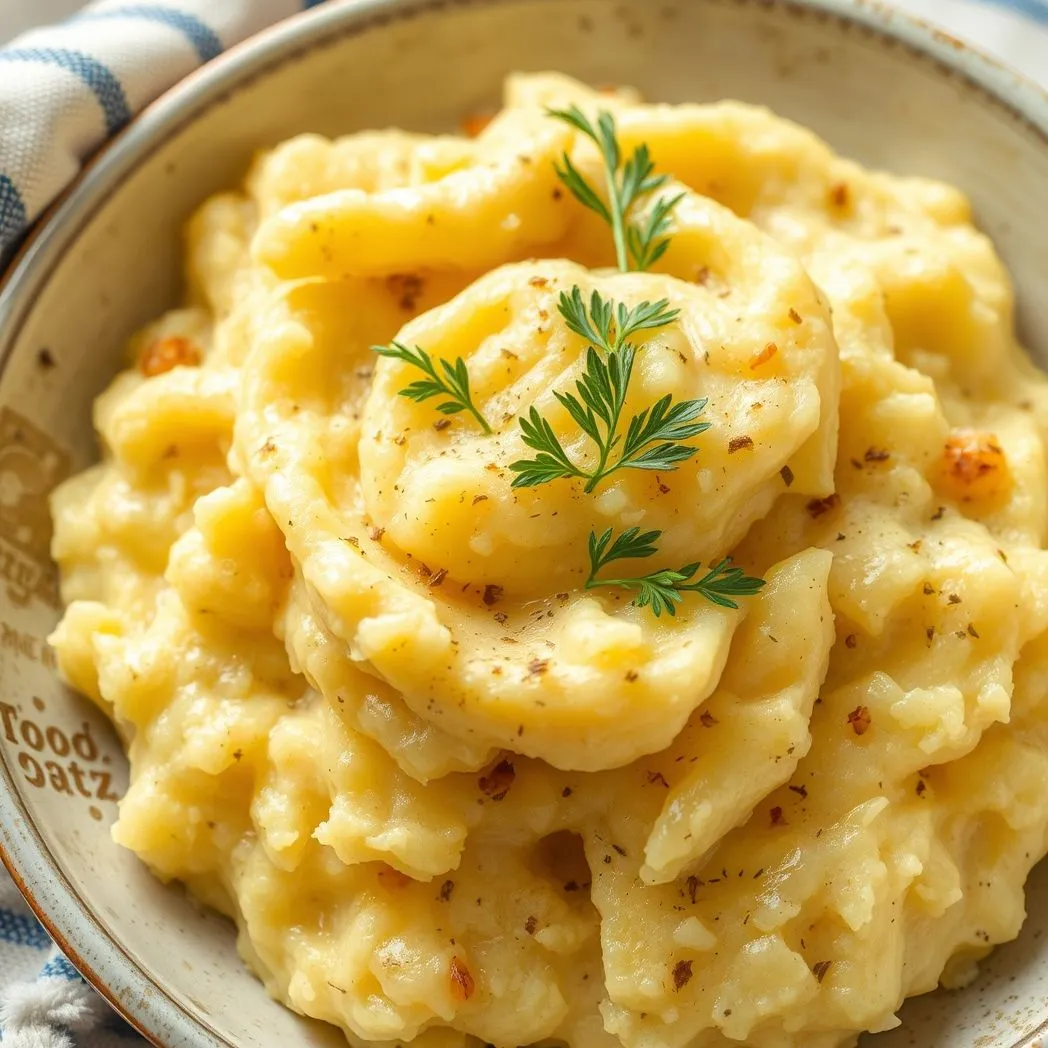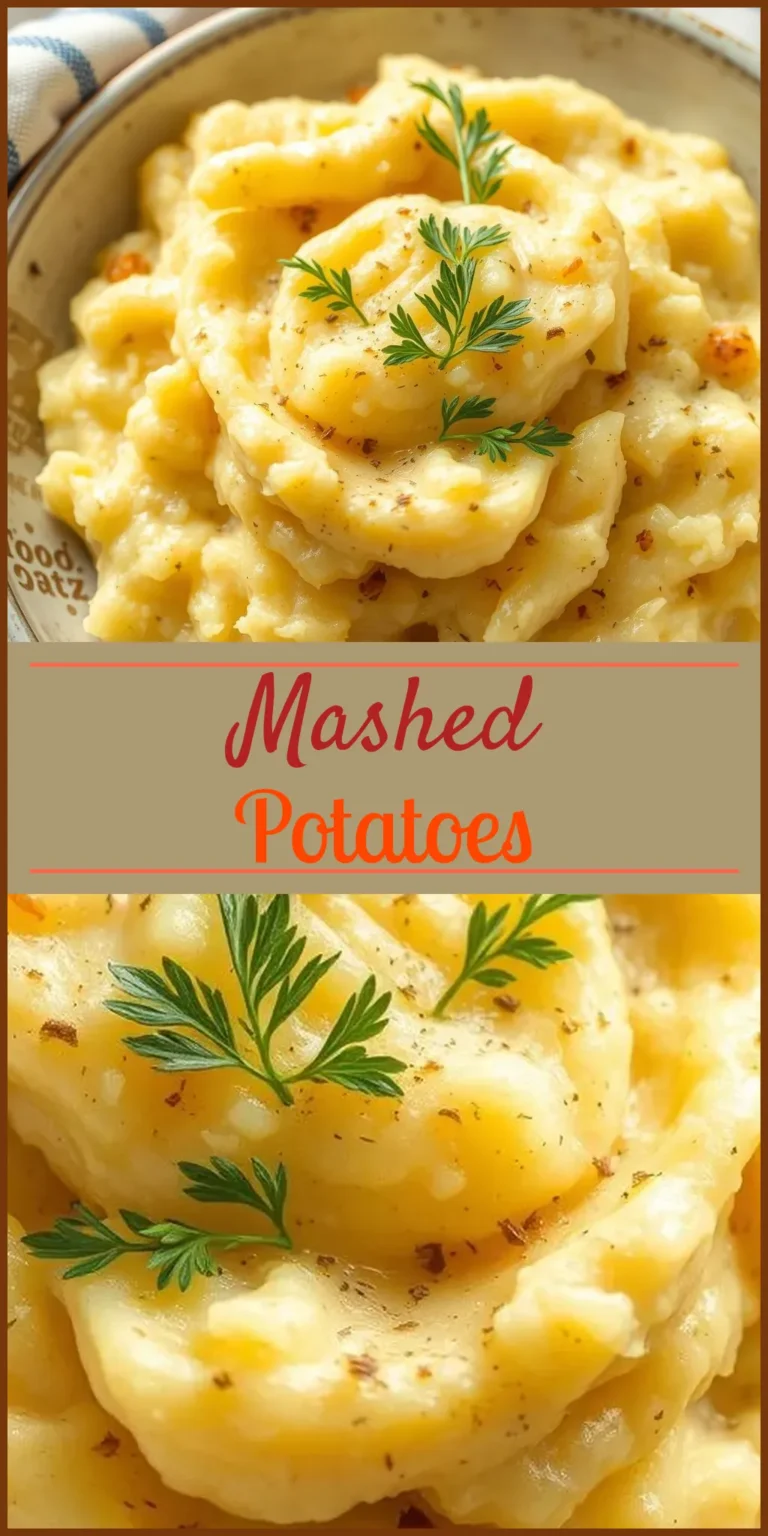It’s no exaggeration to say that mashed potatoes have a way of making any meal feel like comfort food. Whether placed next to a roast at a holiday dinner or piled high beside a weekday meatloaf, their creamy texture and rich flavor manage to please both distinguished palates and picky eaters. Making truly great mashed potatoes is a bit of a craft, and over the years, I’ve assembled a reliable method that garners empty bowls and requests for seconds.
This guide covers every step, ingredient choice, method, and extra flourish needed for the best mashed potatoes.
Choosing the Right Potatoes
The foundation begins with the potato itself. Starch content, texture, and flavor profile determine whether your mash comes out fluffy, creamy, or gluey. Here are the top contenders:
| Potato Variety | Starch Level | Resulting Texture | Flavor Profile |
|---|---|---|---|
| Russet | High | Fluffy, light | Clean, neutral |
| Yukon Gold | Medium | Creamy, rich | Buttery, subtle |
Russets break down easily when boiled, delivering that classic fluffy bite. Yukon Golds contribute a naturally buttery taste and smooth finish. I use a mix to balance fluff and creaminess, but using one or the other works well, too.
Essential Ingredients
While potatoes are the star, several other ingredients create that signature depth and silkiness. Here’s what you’ll need:
- Potatoes – 3 pounds (Russet, Yukon Gold, or a mix)
- Milk – ¾ cup (whole milk preferred)
- Butter – ½ cup (1 stick, unsalted)
- Garlic – 2-3 cloves (optional, for flavor infusion)
- Salt – for both boiling and seasoning
- Black pepper – freshly ground enhances every bite
Ingredient Tips
- Milk: Swap with half-and-half or heavy cream for extra decadence.
- Butter: Unsalted allows control over seasoning.
- Garlic: Roasting cloves before mashing creates a mellow sweetness.
Step-By-Step Preparation
1. Prep the Potatoes
Start by peeling the potatoes for a uniform, smooth texture. Leave the skins on if you prefer a rustic version. Cut into 1-inch cubes to ensure even cooking.
2. Boil for Tenderness
Place the potato pieces in a large pot. Cover with cold water—starting cold means the potatoes cook evenly from inside out. Generously salt the water to infuse flavor as they cook.
Bring to a boil over medium-high heat. Reduce to a gentle simmer and cook the cubes until they’re fork-tender, about 15 to 20 minutes. They should yield with barely any effort.
Tip: Overcooked potatoes can absorb too much water, making the mash soupy. Keep a close eye on them.
3. Drain and Let Steam
Drain the potatoes in a colander, then let them sit for five minutes. This allows excess moisture to escape, so you get fluffy, not watery, mashed potatoes.
4. Mash to Your Liking
Return drained potatoes to the pot or a large bowl. For extra smooth results, use a potato ricer or food mill. For a chunkier texture, a classic masher or even a sturdy fork does the trick. If you infused garlic, mash it in now.
5. Incorporate Butter and Milk
Warm the milk and butter together until the butter just melts. Pour the mixture over the potatoes and begin folding gently. The potatoes will soak up all that fat and flavor.
Add a splash of milk at a time to reach your desired consistency—creamy but holding its shape.
Season generously with salt and a whisper of black pepper. Taste and adjust as needed.
Elevating Your Mash
Once you’ve mastered the classic method, you can invite in new flavors and textures. Here’s how to customize your mashed potatoes for every taste.
Flavor Boosters
- Fresh Herbs: Stir in chopped chives, parsley, or dill for a hint of green and freshness.
- Creamy Add-Ins: Swap some milk for sour cream, Greek yogurt, or cream cheese for a tangy, velvety mash.
- Cheese: Shredded cheddar, gouda, or grated Parmesan add richness and depth.
- Roasted Garlic: Oven-roast a bulb, squeeze the soft cloves into the mash for incredible aroma and sweetness.
- Savory Bits: Crumbled bacon or sautéed onions introduce smokiness and crunch.
Texture Tweaks
- For ultra-smooth potatoes, work them through a potato ricer and use a hand whisk to finish.
- Prefer a toothsome bite? Mash gently and leave a few chunks behind.
Serving Suggestions
Mashed potatoes are versatile enough to complement a range of main dishes. Here are classic pairings and creative companions:
| Main Dish | Why It Works |
|---|---|
| Roast chicken/turkey | Soaks up juices and gravy |
| Beef stew or pot roast | Balances hearty, rich flavors |
| Meatloaf | Classic American comfort pairing |
| Grilled sausages | Bright potatoes contrast savory links |
| Sautéed greens | Light, fresh, and contrasts starch |
Top with a pat of butter, a few flakes of sea salt, or fresh herbs for visual flair and added taste.
Make-Ahead and Batch Cooking
Mashed potatoes are ideal for prepping in advance without sacrificing texture or flavor.
Make-Ahead Method
Prepare potatoes as directed. Cool them completely before transferring to an airtight container. Refrigerate for up to two days. To reheat, spread in a buttered casserole dish, dot with a little extra butter, cover with foil, and warm in a 325°F oven for 30-40 minutes. Remove foil for the last 10 minutes to develop a golden top, if you like.
Storing Leftovers
Cool any leftover mashed potatoes to room temperature. Store in shallow, airtight containers in the fridge for up to five days.
Freezing
Transfer cooled mash to freezer-safe containers or bags, squeezing out extra air. Label and date; freeze for up to one month. Thaw overnight in the fridge before reheating.
Reheating Mashed Potatoes
Retain that creamy texture by reheating gently.
Microwave: Place in a microwave-safe dish, cover, heat on medium, and stir every minute until warm throughout. Add a splash of milk and a dot of butter if needed.
Oven: Spread potatoes in a baking dish, cover with foil, and bake at 350°F for 20-25 minutes.
Stovetop: Warm over low heat in a saucepan, stirring often. Loosen up with a little milk or butter.
Troubleshooting Common Issues
Even seasoned cooks occasionally run into lumpy, gluey, or bland mash. Here’s how to fix common pitfalls:
- Lumpy Potatoes: Mash thoroughly while hot; cold potatoes resist breaking down.
- Gummy Texture: Overmixing releases potato starch; mash by hand and mix just until creamy.
- Watery Mash: Always drain well. Let potatoes steam off excess moisture before mashing.
- Underseasoned: Salt the cooking water and taste after mashing, adjusting salt and pepper as needed.
Frequently Asked Questions
Can I make mashed potatoes vegan?
Yes—replace butter with olive oil or plant-based margarine, and use non-dairy milk (like oat or almond).
Can I skip peeling the potatoes?
Absolutely. Potato skins add texture and flavor. Just scrub well before boiling.
Is it possible to use an electric mixer?
While convenient, mixers can overwork the starch, making potatoes gluey. Reserve electric tools for whipped potatoes if that’s your preference.
What’s the best way to keep mashed potatoes warm for a crowd?
Keep them in a slow cooker on low, stirring occasionally and adding a splash of warm milk or butter as needed.
Final Touches
Mashed potatoes deserve a permanent spot in every cook’s repertoire. With just a handful of ingredients, thoughtful preparation, and a few creative options, you’ll have a dish everyone gravitates toward—creamy, comforting, timeless. Adjust, experiment, and savor every spoonful.

Mashed Potatoes
This recipe makes the absolute best mashed potatoes. They are creamy. They are fluffy. They are buttery. They are totally irresistible.
Ingredients
- Salt and pepper, to taste
- 1/2 cup butter
- 1 cup milk
- 3 pounds potatoes, peeled and cut into 1-inch cubes
- 2 garlic cloves, minced, or more to taste
Instructions
- Place the cubed potatoes in a large pot. Cover them with salted water. Bring the water to a boil over high heat. Reduce the heat to medium-low. Simmer for 15-20 minutes, until the potatoes are fork-tender.
- Drain the potatoes. Return them to the hot pot. Add the minced garlic. Mash the potatoes and garlic together with a potato masher. Continue until smooth.
- Warm the milk and butter in a small saucepan over low heat. Allow the butter to melt completely. Slowly incorporate the milk mixture into the mashed potatoes. Mash continuously until the potatoes reach the desired consistency. Season them generously with salt and pepper.
- Serve. Enjoy.




